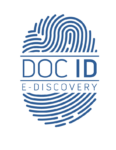- Early case assessment (ECA) provides an opportunity to understand documentary and digital evidence. It also presents opportunities for fact finding and cost savings.
According to the Grossman-Cormack Glossary of Technology-Assisted Review, early case assessment, or ECA, is a “term generally used to describe a variety of tools or methods for investigating and quickly learning about a Document Collection for the purposes of estimating the risk(s) and cost(s) of pursuing a particular legal course of action.”
The glossary notes further that ECA “captures the essence of the trial lawyer’s craft, quickly analyzing and synthesizing evidence from multiple sources, collaborating with the client to develop an initial case strategy and formulating a preliminary discovery and litigation plan that will advance that strategy on the road to a successful resolution.”
While ECA is often associated with electronic discovery and the early analysis of electronically stored information (ESI), its scope should not be so limited. Because ECA is an examination of a legal matter as a whole to assess risks and benefits, it can and should be used in most cases to understand what is really at stake (or at risk). Early examination of facts, data and ESI may reveal helpful information not readily apparent that may ultimately strengthen a litigant’s position (or expose weakness). Moreover, the ECA process not only reveals information about the matter, but also provides an opportunity to plan for and lessen legal spend.
As it relates to e-discovery, ECA is a pre-document review analysis of ESI relating to a legal matter often focused on:
- volume of potential data to review;
- file types in a data-set;
- key concepts and keywords that might help focus review and document collection efforts;
- identification of key data custodians possessing knowledge and information relating to the matter;
- location of data sources;
- conversation and e-mail threads to ascertain communication patterns;
- data reduction so that it does not have to be reviewed;
- deduplication, so that amount of data may be reduced before loading into document review tool.
One of the main purposes of assessing and evaluating e-discovery aspects of a legal matter early is to gauge the time, money, and resources it will involve. This helps manage expectations and helps prepare legal budgets.
Many e-discovery software platforms offer ECA tools that permit users to easily analyze data. Some programs work in conjunction with legal hold features and permit users to conduct ECA efforts even before the data is collected. The software often presents ECA data graphically in charts, graphs, and data maps.
As noted, use of a documented, consistent ECA workflow is a prime opportunity to save money on legal bills. For instance, we examined the work we did over an 18 month period for a client for which we handle subpoena compliance and managed document review. The results: savings to the tune of almost $400,000. A significant portion of this savings was realized during the early phase of projects and as a result of early case assessment techniques. We were able to significantly reduce the data collected and reviewed for the legal matters. After the ECA phase, on average, we were able to limit the ESI for potential review to just 6% of gross data in any given case.
It should not be overlooked that ECA provides a great opportunity to not just to get a handle on documentary and electronic evidence, but also presents a fact finding opportunity. This is so because any good ECA effort involves conversations and interviews with witnesses and custodians familiar with the matters in dispute.








Leave A Comment